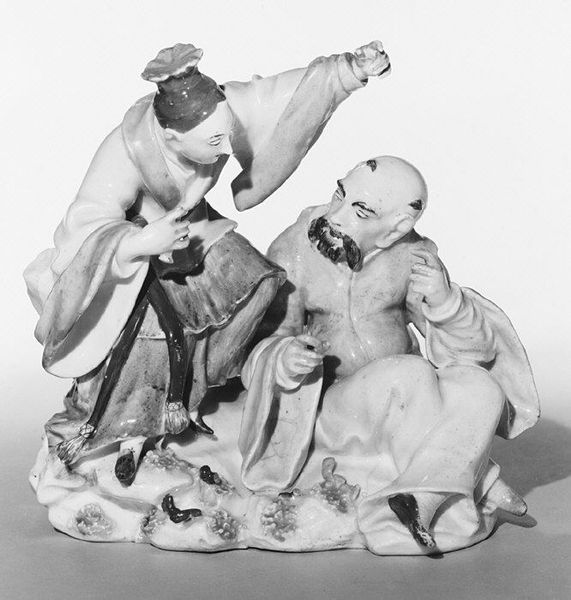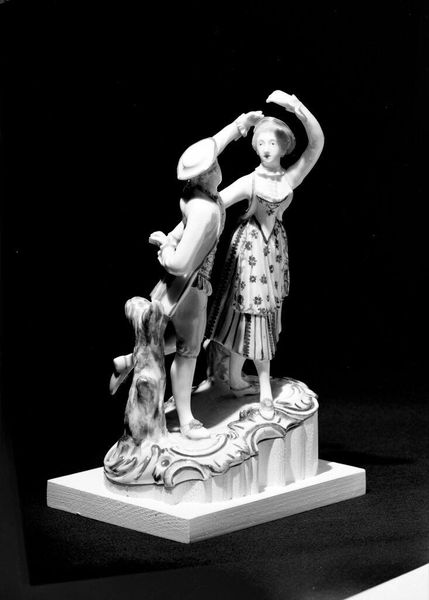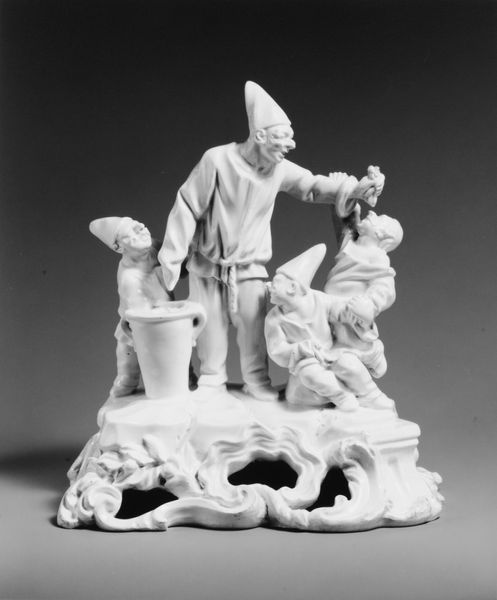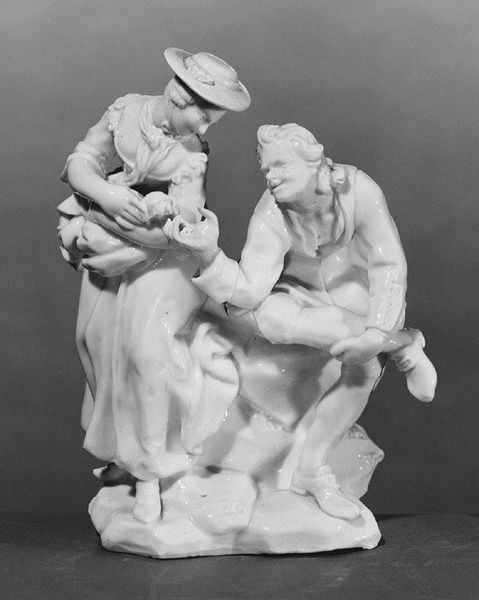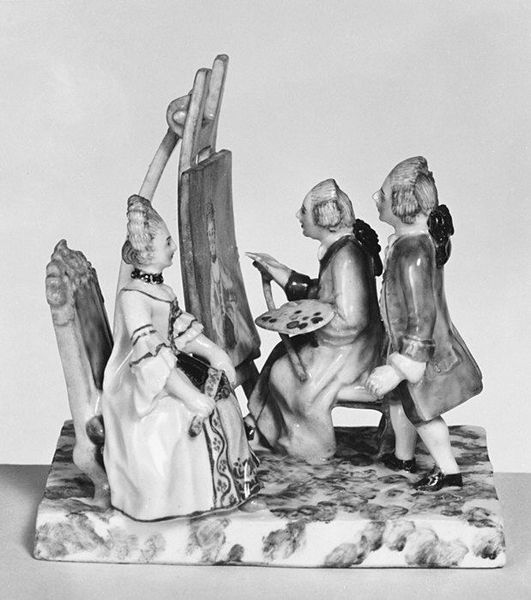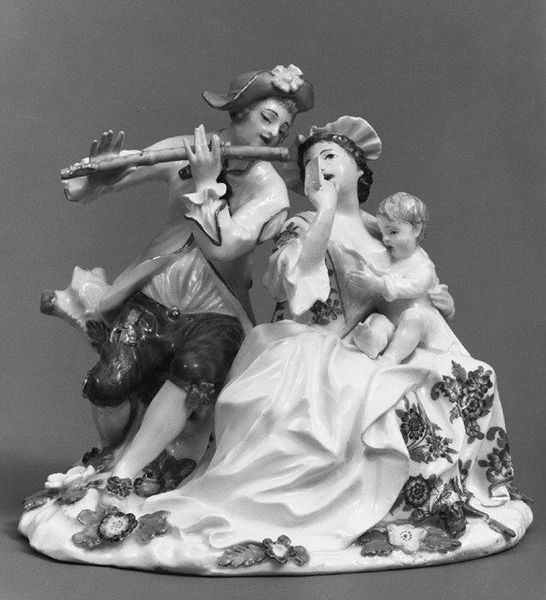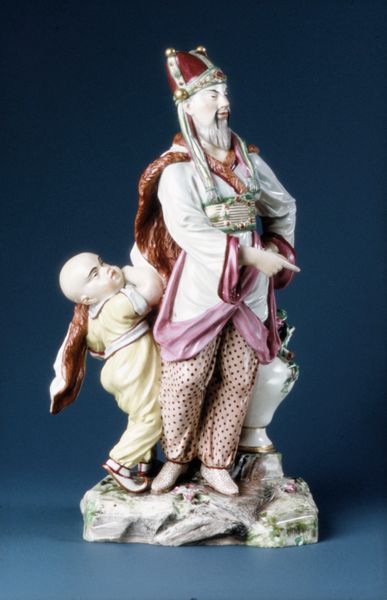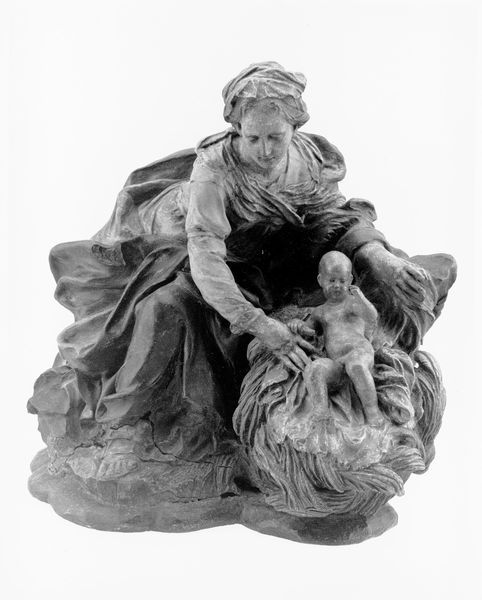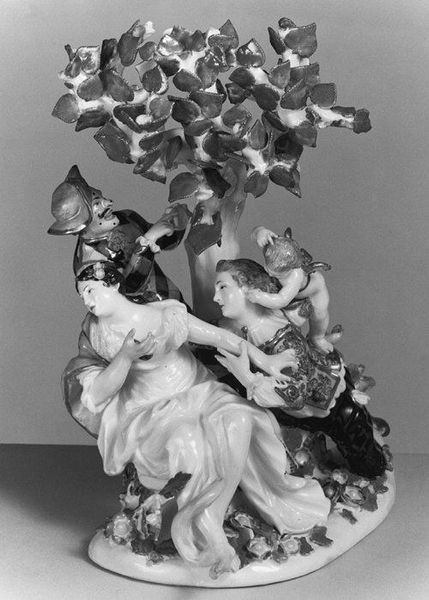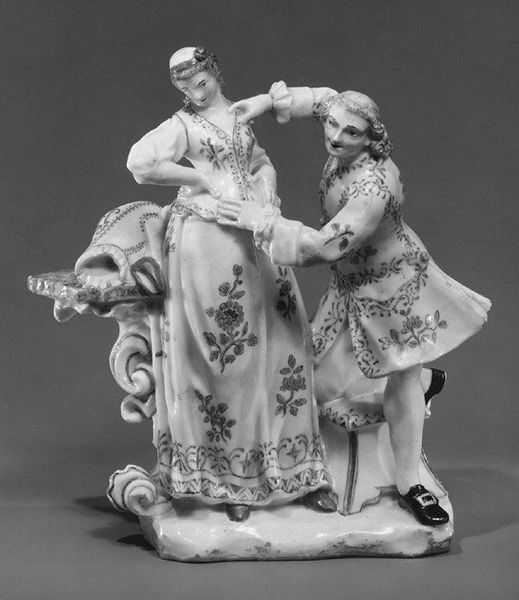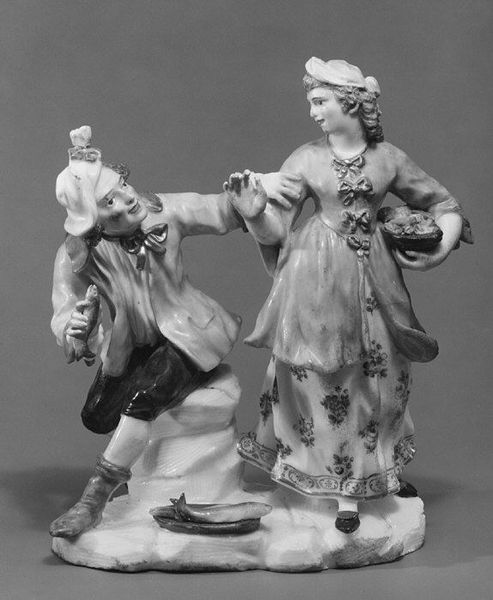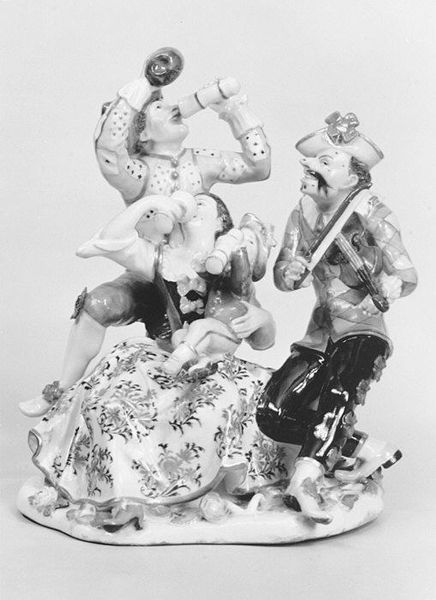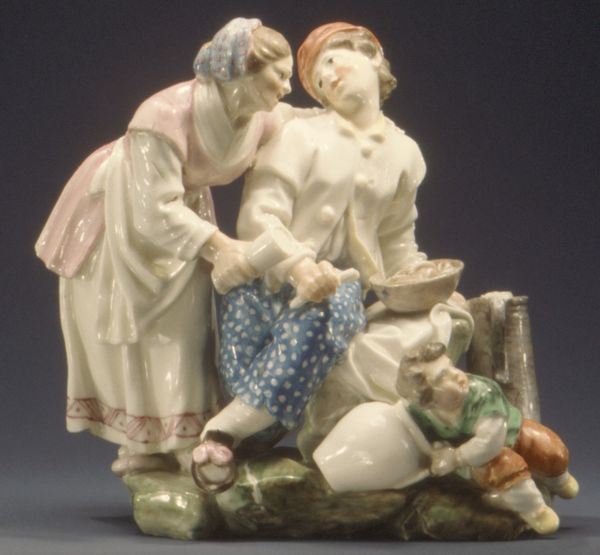
ceramic, porcelain, sculpture
#
sculpture
#
ceramic
#
porcelain
#
figuration
#
sculpture
#
genre-painting
#
decorative-art
#
italian-renaissance
#
rococo
Dimensions: Height: 8 9/16 in. (21.7 cm)
Copyright: Public Domain
Curator: At first glance, this porcelain sculpture exudes a lighthearted, mischievous energy. Editor: Indeed. What we're looking at is a piece called "Apple Stealers," crafted sometime between 1747 and 1749 by the Capodimonte Porcelain Manufactory. Today, it resides here at the Metropolitan Museum of Art. Curator: There’s a youthful exuberance captured in the figures—the composition and their gestures create a tableau of playful disobedience, with undertones of classic Renaissance allegory, but very humanized. The porcelain gives it such a delicate form. It seems almost a humorous critique of social class in visual form. Editor: That's fascinating. Considering its production within the royal manufactory established by Charles VII of Naples, it's possible to see a parallel with depictions of peasantry in genre paintings—a softened view of everyday life meant for aristocratic consumption. Think of it as a carefully controlled narrative about those outside the palace walls. Curator: I find that notion reflected in the symbolism itself. Apples often represent temptation, stolen pleasures—but rendered here in such miniature scale it makes the drama almost comedic, trivialized perhaps. We lose much of the weightiness in more archaic or sacred art using similar symbols. It's the shift in application I find compelling. Editor: And the use of porcelain, particularly Capodimonte's soft-paste variety, speaks volumes. Porcelain was then synonymous with luxury. Placing this playful scene, supposedly representing "common" life, within such an aristocratic medium speaks directly to its intended audience. It's decorative art, intended as a sophisticated conversation piece within an elite social sphere. The manufactory also functioned in this sense as an extension of courtly power and taste. Curator: Agreed. Looking closely, you see these delightful small details--a little dog at their feet for instance. Each detail invites contemplation. It certainly resonates with a different kind of viewer today; its original function feels almost distant now as museum piece. Editor: Exactly. But hopefully a glimpse like this lets audiences better understand the role of both craft and narrative that works of decorative art served historically—mirrors held up, albeit selectively, to a past society.
Comments
No comments
Be the first to comment and join the conversation on the ultimate creative platform.
